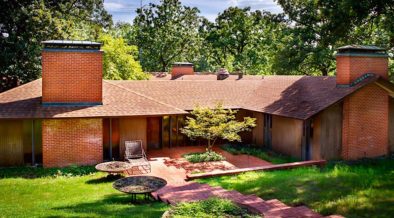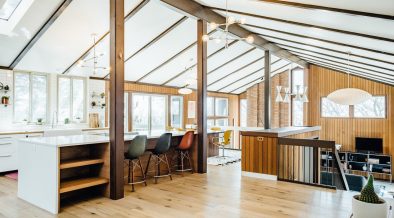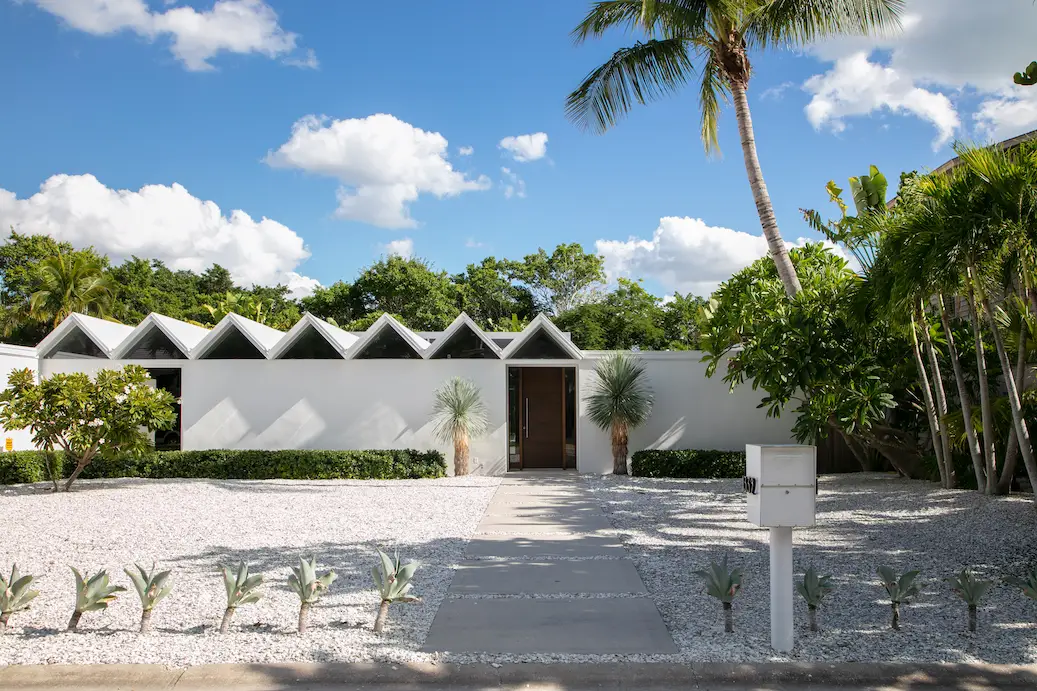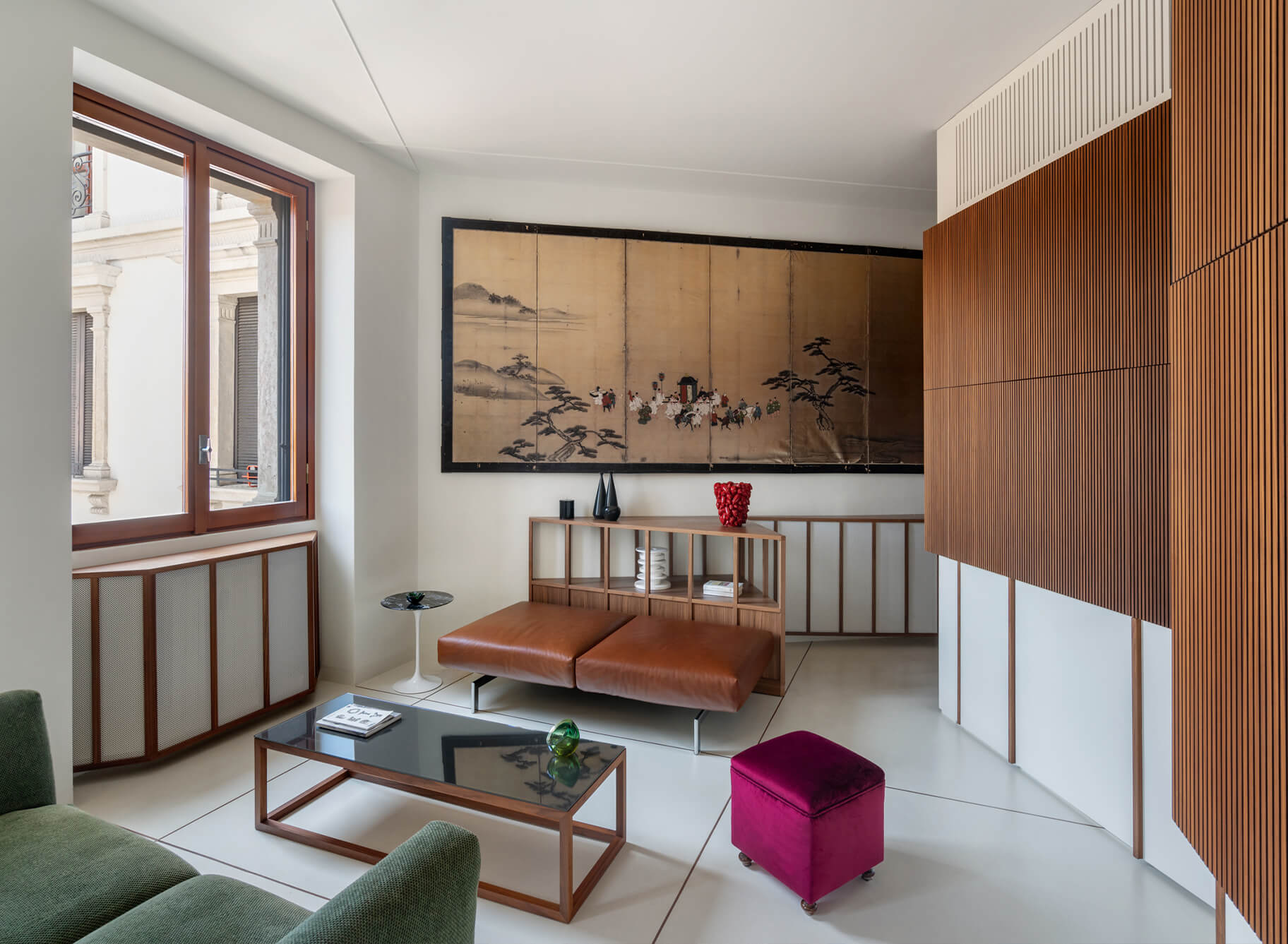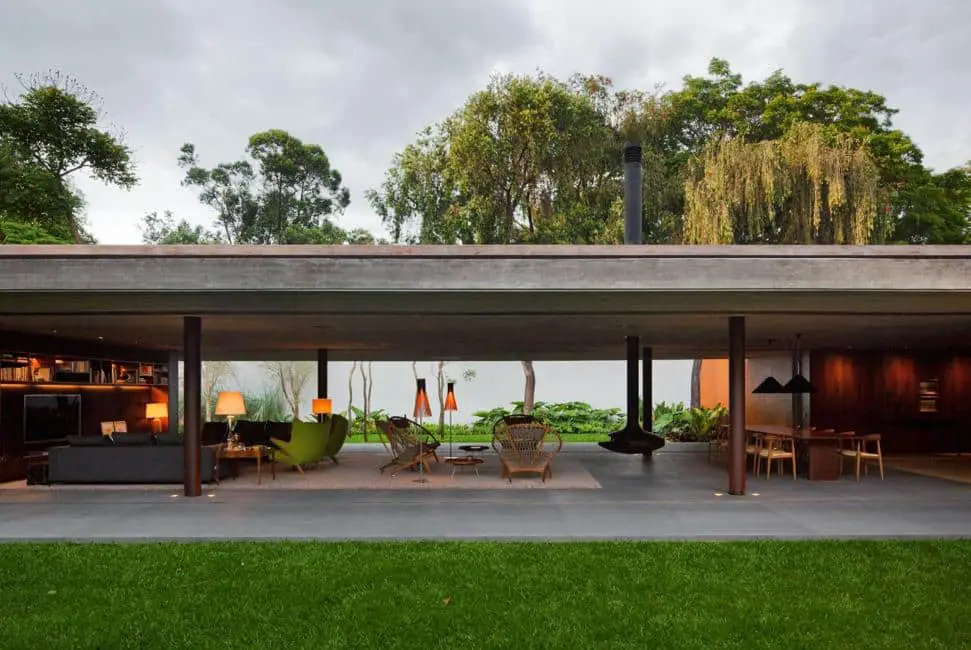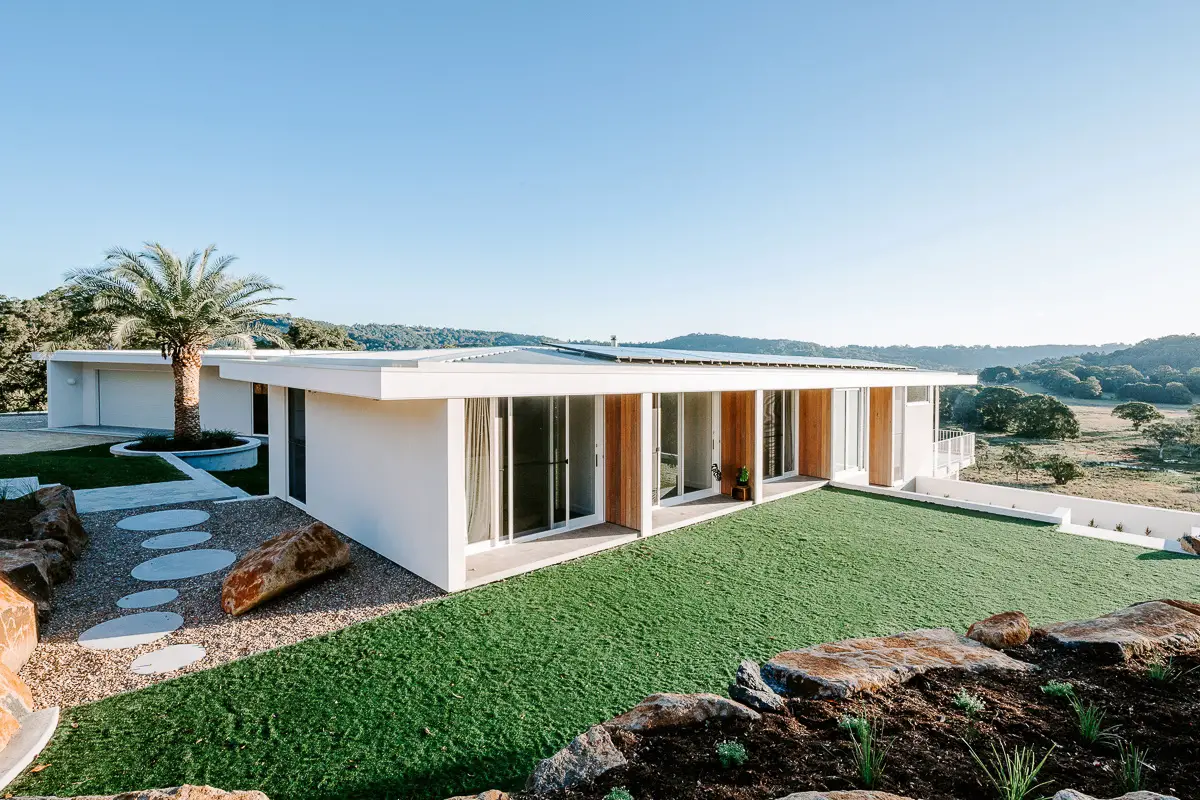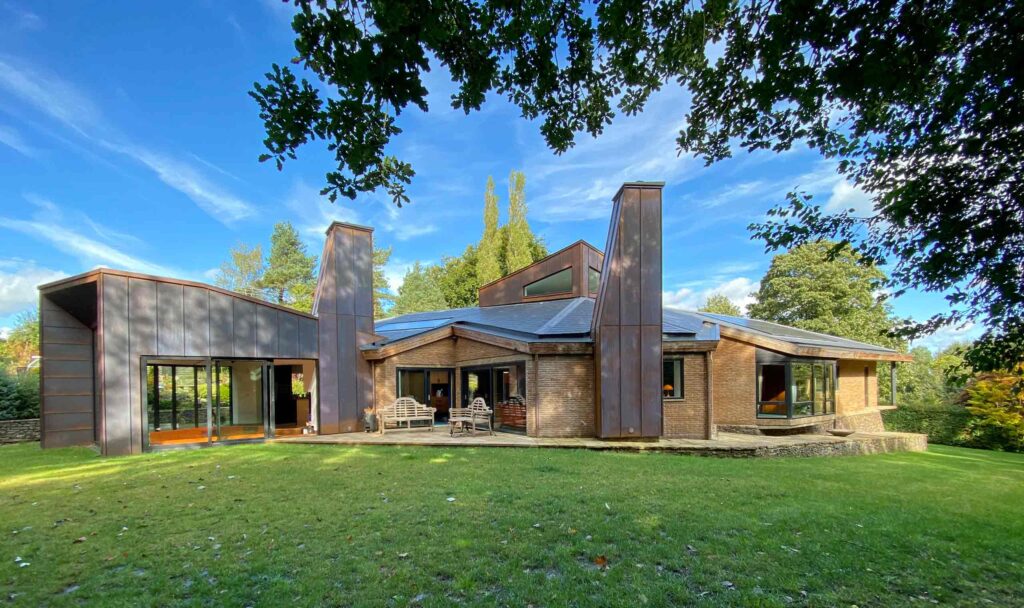
Ravine House, a 1960’s modernist house, set within a stunning wooded site in Sheffield, England, is a stunning example of renovation for the 21st century. The original house was built to an exceptional standard, and had remained largely unchanged over time. CE+CA were enlisted to modernize the home, especially with regards to central heating and insulation, in order to extend the life of the existing building.
There was a close collaboration between the client and architect during which time fascinating insights were uncovered behind the design and construction of the original house. The expression of building materials was fundamental to the original design, and the existing palette of stone, brick, timber and copper informed the design approach.
The refurbishment sought to upgrade performance of the existing building to exceed current requirements, creating an airtight building while not diminishing the original design. The new extension is a contemporary addition that serves to open up the living spaces to the garden, creating clear connections between house and landscape.
One important objective was for the building and site to be as self-sufficient as possible. This was achieved via triple glazing, high performance insulation, solar panels, and a new borehole that provides potable water and serves a ground source heat pump, generating both hot water and heating.
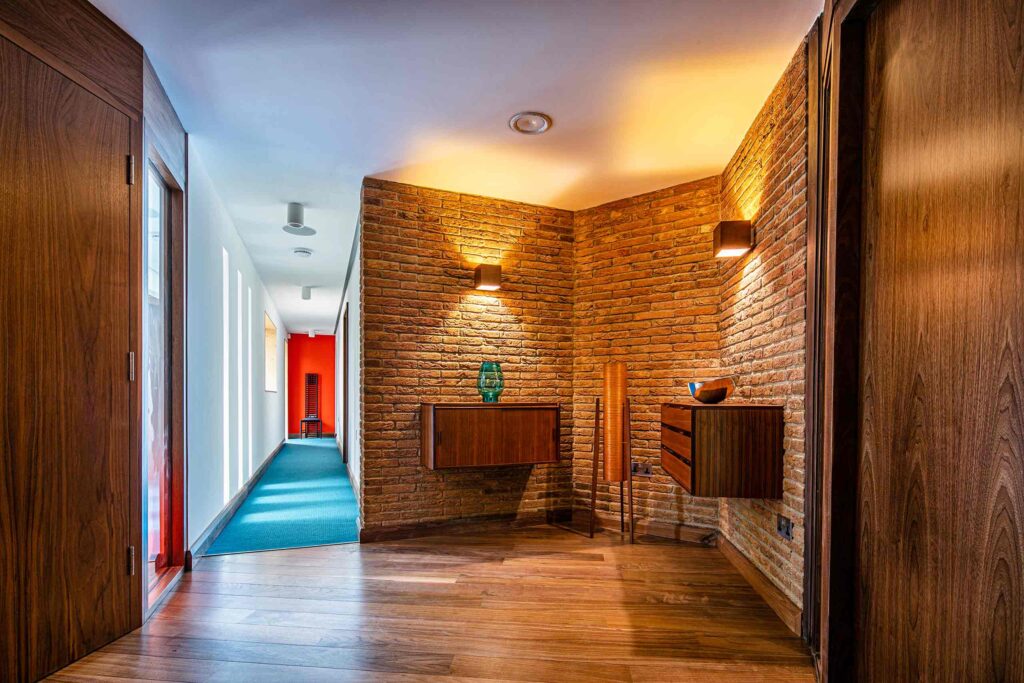
We chatted with project architect Claire Kemp to find out more about the project.
Do you have any details on the client brief?
“The client initially came to us with a brief to knock the building down, but to build it again in a similar style but warmer! Having inherited the home from family, our client’s lasting memory of the house was of it being unpleasantly cold to inhabit (original underfloor heating had failed years ago). We went through an extensive feasibility process with the client looking at the pros and cons of demolition versus refurbishment.
We researched the building’s history, analysed its materials, form and qualities and looked at how we could upgrade the existing building fabric to modern standards without knocking it down. The result was that the client’s decided to retain the existing building and really invested in the journey of understanding the remarkable qualities of the building they had inherited.”
What were your challenges for this project?
“The biggest challenge was probably the technicalities involved in insulating and airtighting the building internally with its complex geometries and whilst maintaining original features such as the vaulted parana pine ceiling over the living room. Adding new elements to the building (garden room and chimneys) was also challenging – we wanted them to be harmonious with the existing building and form, but also to stand as new elements in their own right.”
What was the house like previously?
Whilst the house was cold, the original structure was still in good condition for the most part. The house maintained many of the original features in their original location such as the parana pine ceiling, handmade brick walls and original 1960s bespoke wardrobes. Some elements though were hidden away for the client and ourselves to discover along the way such as original 1960s light fittings found in the attic and an offcut of the original carpet found in the back of a bedroom wardrobe.
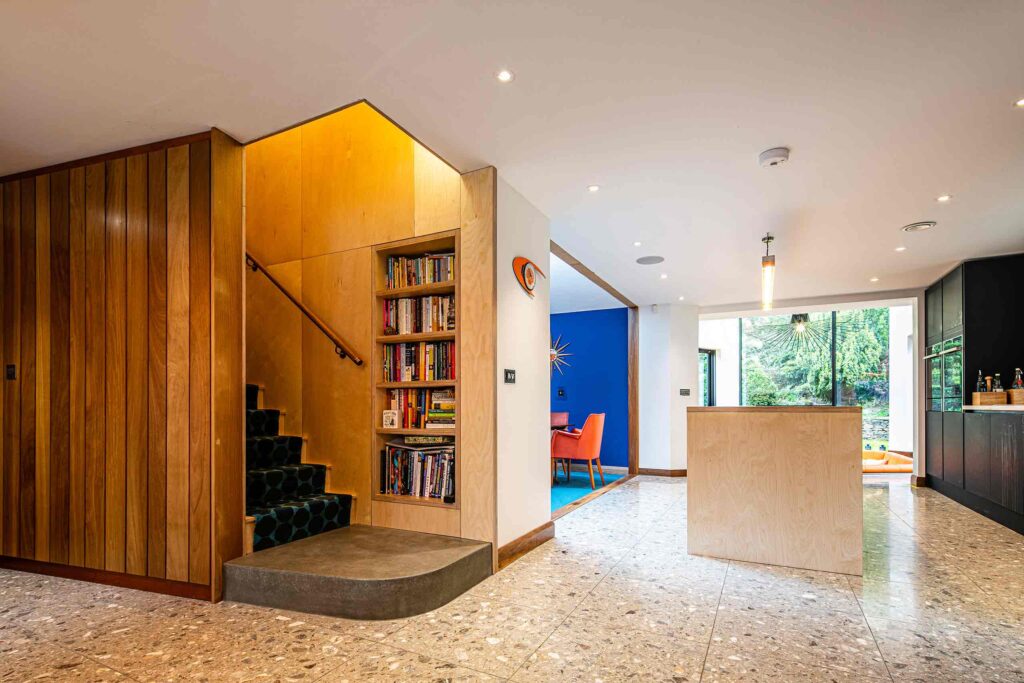
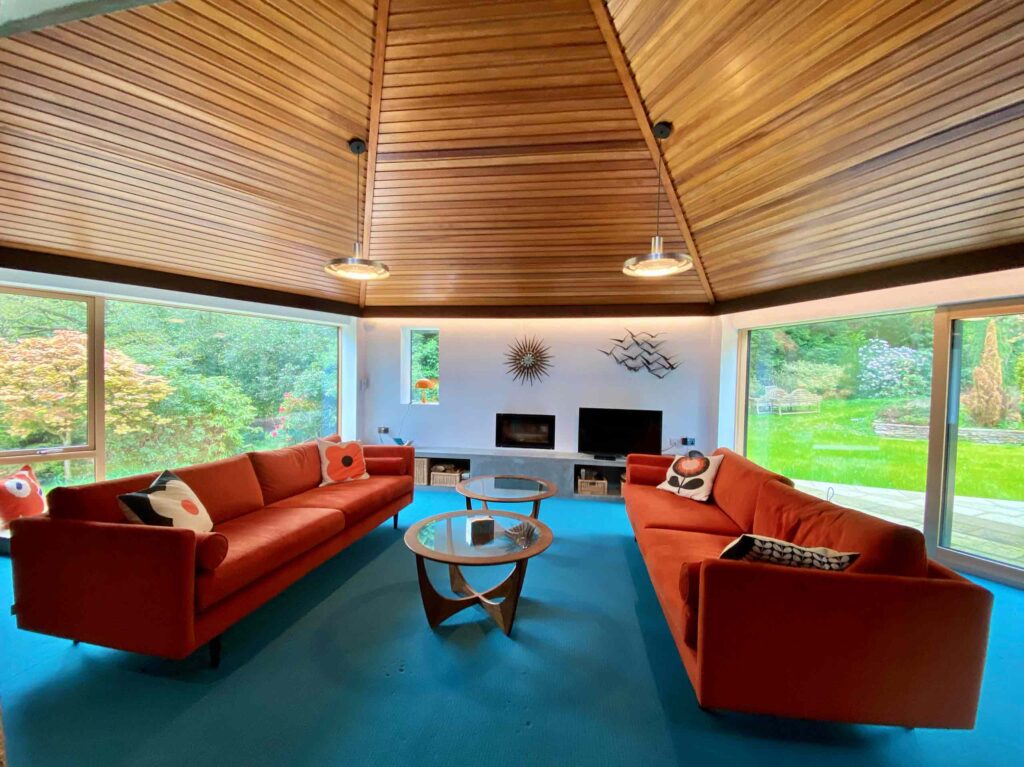
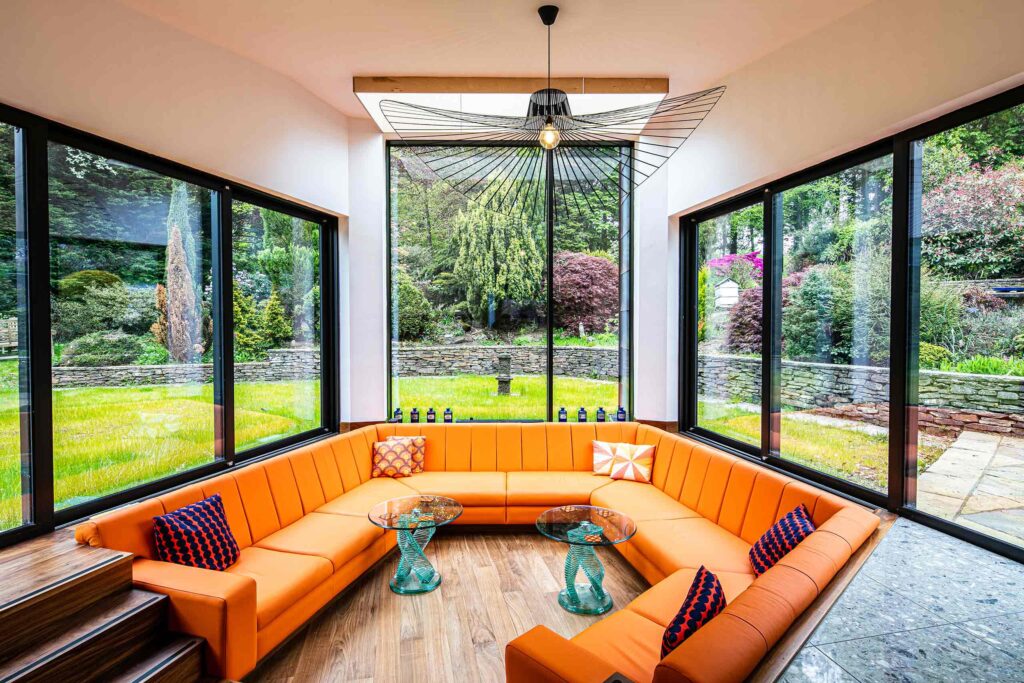
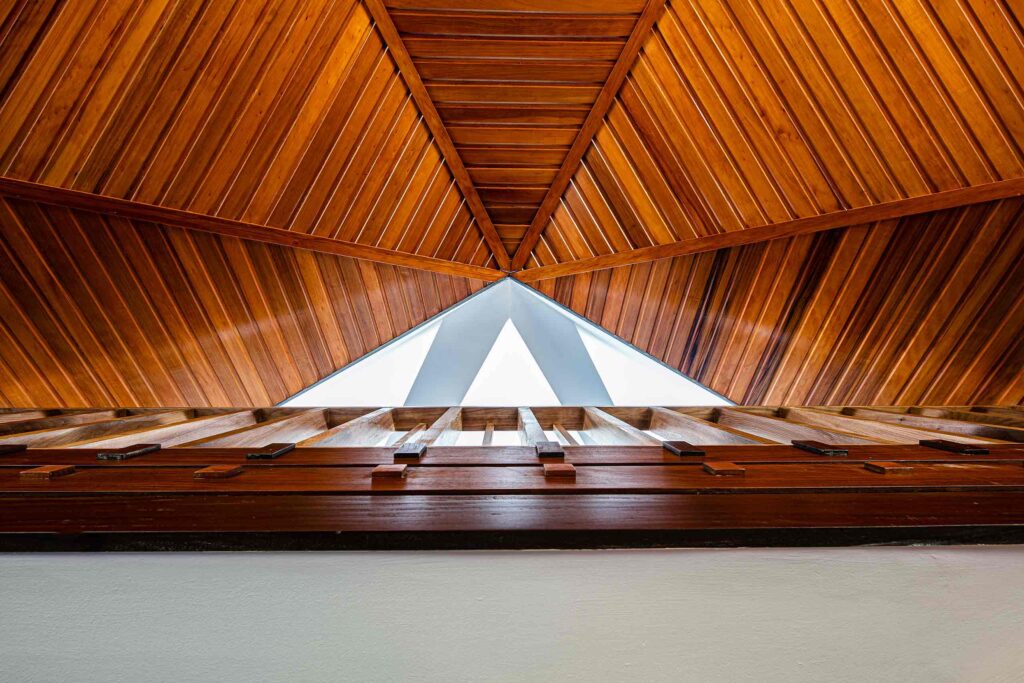
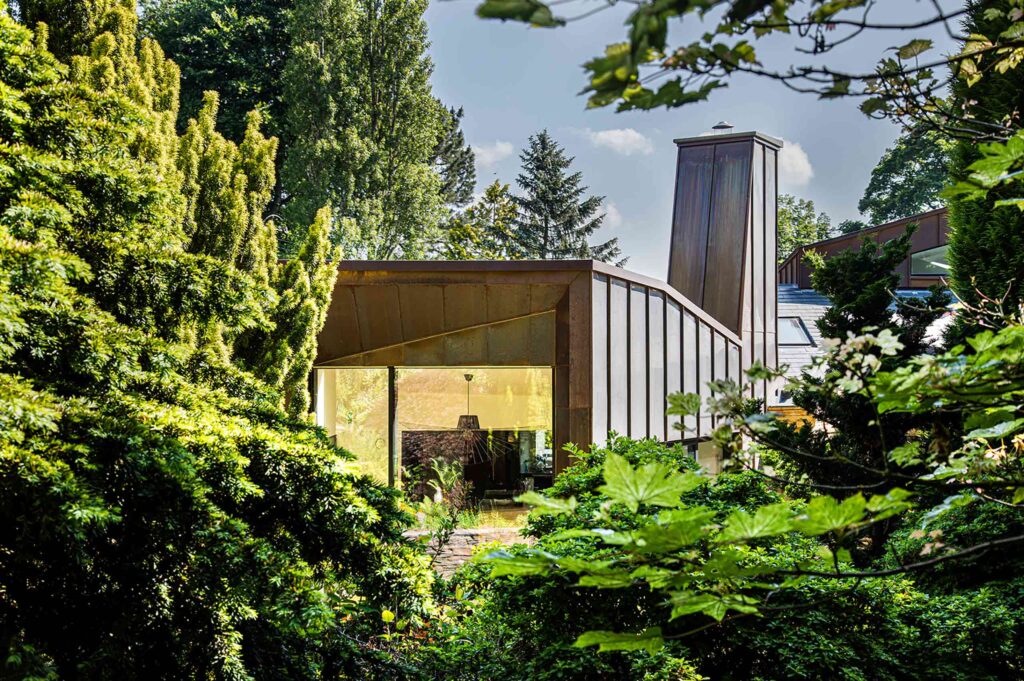
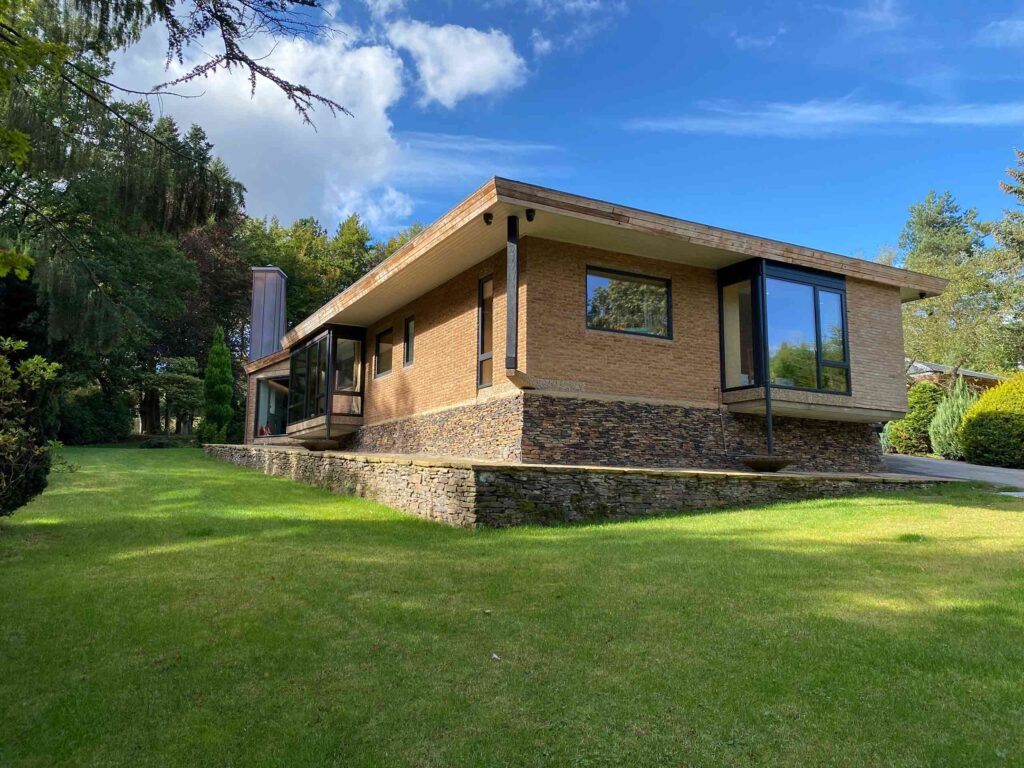
What in your opinion are the best features of the home?
For us, the best features of this refurbishment are probably the hidden elements which have allowed the building to become virtually ‘off-grid’ and really bring this building into the 21st Century whilst allowing for the 1960s design qualities to be maintained.
New internal insulation and triple glazed windows significantly reduce the energy demands of the building, a 60m deep underground borehole provides a water supply as well as heating and hot water and inset solar panels on the roof are visually discreet but provide a renewable source of electricity that supplies the borehole pump and other energy needs.
Last but not least, do you have any tips for people interested in buying a midcentury house or building a new home with midcentury design elements? What should they pay attention to and why?
I think the most important aspect of this project was research. It started with research into the history of the building and the origins of specific features and went right through to researching the most up to date methods of insulating an existing building, sourcing modern fittings with a nod to the 60s or researching places that could recreate some of the original elements such as the carpet.
A lot of local subcontractors and craftspeople were involved in this project and researching and appointing the most appropriate people was a real team effort between the client, the contractor and ourselves and that effort really paid off in the quality of the refurbishment.
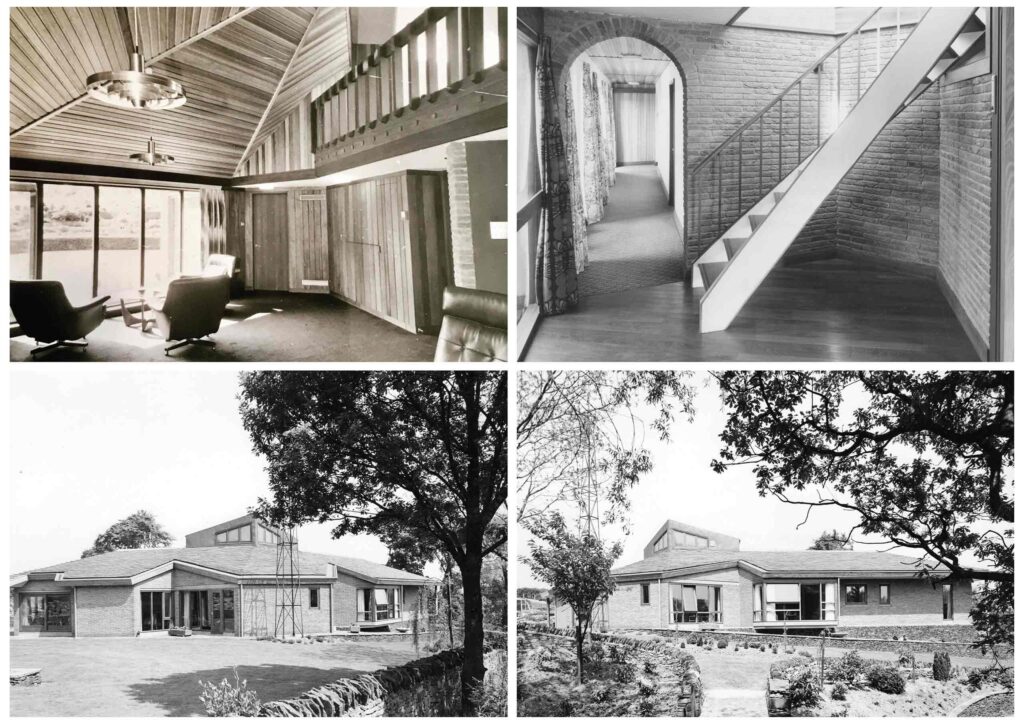
Photos by Dug Wilders and Terry Huggett





